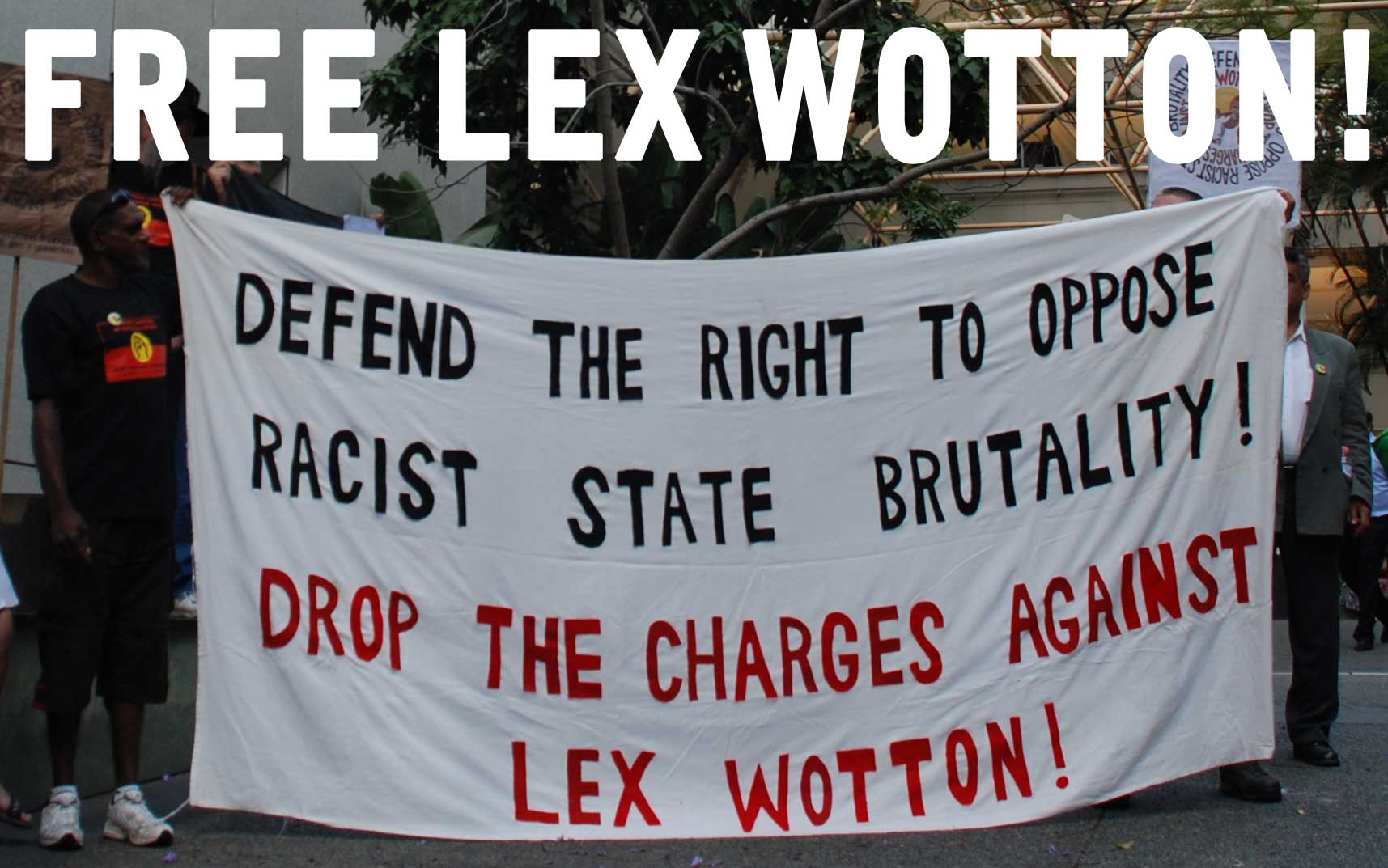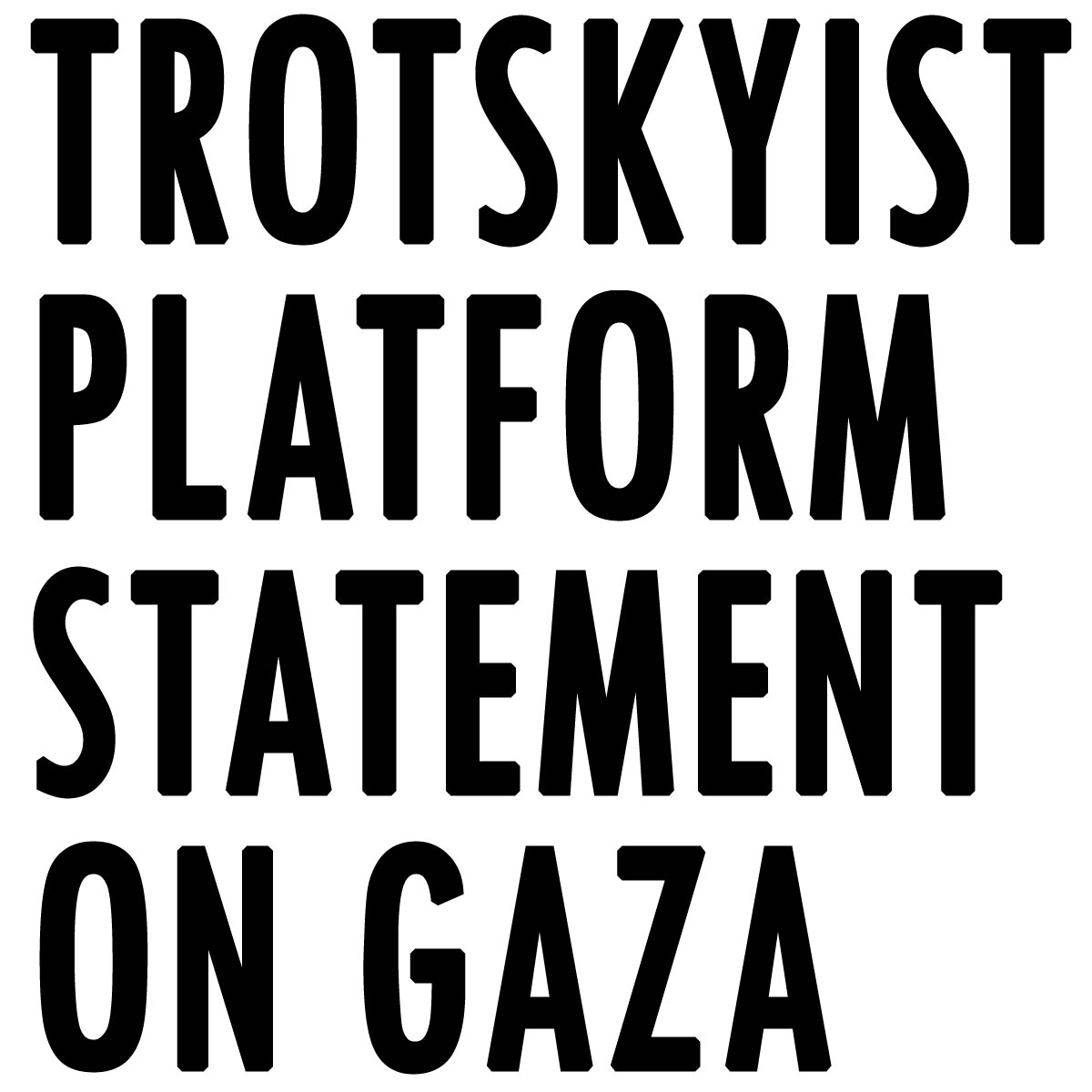Anti-Racist Hero Gets Stronger And Stronger
Drop The Charges against
Lex Wotton!
Anti-racist hero Lex Wotton, an Aboriginal man and a skilled worker from Palm Island, will face a Brisbane court. His trial on charges of "riot with destruction" is scheduled to begin on October 6th.
That Lex Wotton is being persecuted at all shows how really racist this country is. In November 2004 a policeman bashed to death an Aboriginal man, Mulrunji Doomadgee, at a police station in Palm Island. But the racist cop, Senior Sergeant Chris Hurley, and the police who covered this up for him were allowed to go totally free. Only the heroic Aboriginal people who resisted were jailed. Twenty three Palm Islanders were arrested and singled out following resistance actions that responded to the racist murder, actions that involved 400 people - over 10% of the entire island's population. Several resistance fighters were jailed for one to two years. Now Lex Wotton is facing charges that could carry an up to 13-year jail term.
In contrast, the cop Hurley has so far more than got away with the killing of Mulrunji. It was revealed this May that, three months after Mulrunji's death, Hurley was awarded over $102,000 by the Queensland ALP government as "compensation" for "losses" caused by the Palm Island Aboriginal resistance struggle (The Courier Mail, May 28.) That's the "rule of law" and "democracy" working.... Capitalist Australia Style!
Not a single policeman has ever been jailed over an Aboriginal death in custody. No one was charged over the state murder of Carl Woods, of TJ Hickey, of Daniel Yock, of Eddie Murray. There have been over 500 black deaths in state custody in the last 27 years. That amounts to about one in 800 indigenous people dying in custody. At this rate, if the indigenous population in Australia was the same as the whole population of China, the number of black deaths in custody in Australia would be equal to 1.3 million people! That is the scale of the genocide that is happening in the now wall-to-wall Labor government-led "democratic" Australia.
What happened to Mulrunji is an horrifically symptomatic example of the racist oppression that Aboriginal people face throughout this country. The policeman who killed him had even earlier been involved in racist brutality against black people. During the inquest into Mulrunji's death one woman, Barbara Pilot, told of how Hurley had reversed a police vehicle over her foot, hurting it so badly that the "bone was sticking out through the skin" (The Townsville Bulletin, 28 February 2006.) Hurley had predictably been "cleared" by fellow cops of any wrongdoing. In another case in July 2004, Hurley had kneed a man in custody in the stomach and squeezed his throat ferociously after the prisoner, Noel Cannon, asked for a mattress. In this incident, which occurred just months before the killing of Mulrunji, Hurley almost choked the man to death. For such "services," Hurley has been well rewarded. Only a short time after killing Mulrunji, he was working in a Police job in a resort area and was enjoying ownership of a near $1 million worth of Gold Coast properties, including two units in Burleigh Heads and a modern house at Carrara purchased in early 2006 (The Australian, 28 December 2006.)
The killing of Mulrunji has thrown a spotlight on state brutality in Palm Island. Yet after the outrage of this death-in-custody still racist police behaviour continues there. The Palms community is incensed because in the last few months police strip searching of youth has got worse and worse. This of course does not just happen in Palm Island. Racist police harassment of black youth occurs from Palm Island to Moree to Redfern, from Perth to Alice Springs to La Perouse. As a respected community member who has lived in the Redfern area for several decades remarked, indigenous people in Redfern have been suffering under a violent and racist Intervention for many years now in everything but name.
Aboriginal and other anti-racist activists however wanted real justice. Many joined the families of deaths in custody victims in devoting much energy to working with the Royal Commission process. But when the Royal Commission handed down its findings in 1991, it was true to form for a state inquiry - it expressed the interests of the ruling elite whose state was funding and overseeing the "independent" Commission. The Royal Commission whitewashed the racist state killings of black people in custody. Not a single criminal proceeding was recommended against police or prison officers. The only cop or screw to face any penalty over a death in custody was a South Australian prison guard ... who was fined $50 for a breach of internal regulations in the death of Kingsley Dixon. As Alice Dixon, angrily asked: "That's it, is it? Is my son's life worth only fifty dollars?!" (Eddie's Country, Simon Lockhurst)
In many cases "investigated" by the Royal Commission it was all too clear that the prisoners had been murdered and that the state officers (who in some cases even the Royal Commission had to accept had falsified evidence) were the only ones who could have been responsible. Indeed even the Royal Commission's own report said that of the 99 deaths in custody it "investigated," 30 died by hanging, 12 from head injuries, 7 from other external trauma and 4 from gunshot (Eddie's Country.) But no justice for a single victim! Instead as a sop to the families and to anti-racists, the Royal Commission accepted that Aboriginal people faced paternalism and made 339 recommendations some of which in theory could have eased the rate of black imprisonment. But even those particular recommendations, which were in any case mostly never implemented (instead governments have been introducing laws in the opposite direction ... like the Intervention!), even these were based on an attempt to cover the tracks of the state forces. For the findings were based on the outrageous lie that the deaths in custody were all caused by suicide rather than the truth that many were the result of racist state murder.
Since then, as before, state inquiries into Aboriginal deaths in custody have been whitewashes. The Coroners Inquest into the police killing of TJ Hickey in Redfern was a sham. And so was the police "investigation" into Mulrunji's death! That is what sparked the Palm Island resistance struggle. People gathered in the Town Square and as they heard of the incredible whitewash of lies they marched on the centres of injustice on the island: the police station and courthouse. The buildings housing those institutions were then, as is well known, rapidly diminished.
This Palm Island anti-racist resistance involved 10% of the island's population! It was not only a 100% justified struggle. It was also an urgent act of self defence. If the racist state authorities had been allowed to kill a black man in custody and then totally whitewash it with no adverse consequences, it would have been a big green light for further racist state violence. Now at least they knew that when they committed further atrocities they risk being again faced with mass direct action.
Most importantly, the audacity of the Palm Island resistance had the potential to inspire solidarity struggles throughout the country from others facing oppression. Firstly, from Aboriginal people and their anti-racist activist allies. But more broadly from politically advanced sections of the union movement, whose militant detachments too face state repression, for example when cops attack the picket lines of striking workers. At the actual time of the Palm resistance, major acts of solidarity (for example workers industrial action to protest police repression against the resistance fighters) sadly did not take place throughout Australia. This was because the current, largely pro-ALP leadership of the workers movement had not been up to the task and also because of the weight of conservative, state-promoted figures within Aboriginal organisations. But in the longer term the Palm Island resistance actions did create significant reverberations throughout this country and beyond. It not only ensured that Mulrunji's killing could not be totally swept under the carpet like most of the other black deaths in custody but brought the question of police racism in Australia to national and international prominence. The political impact of the Palm Island resistance would lead to ongoing street protest throughout the country over Mulrunji's killing. This social protest, and the potential it had to climb to the militancy of the original Palm Island resistance, made the racist Queensland authorities eventually calculate that they had no choice but to make the killer cop Hurley at least go through the motions of a trial. But the blatantly biased nature of that "trial" proved not only how unreformably unjust the legal system is but proved how correct it was for the Palm Island resistance to defy the cops and courts.
Today, the Palm Island resistance continues to shape the struggle against racism. This is because there is a growing solidarity movement fighting to have the charges dropped against Lex Wotton. This movement is highlighting the racist nature of Australia's legal system and is making more and more anti-racists realise that resistance that escapes the prescribed bounds of this unfair capitalist system is 100% justified.










